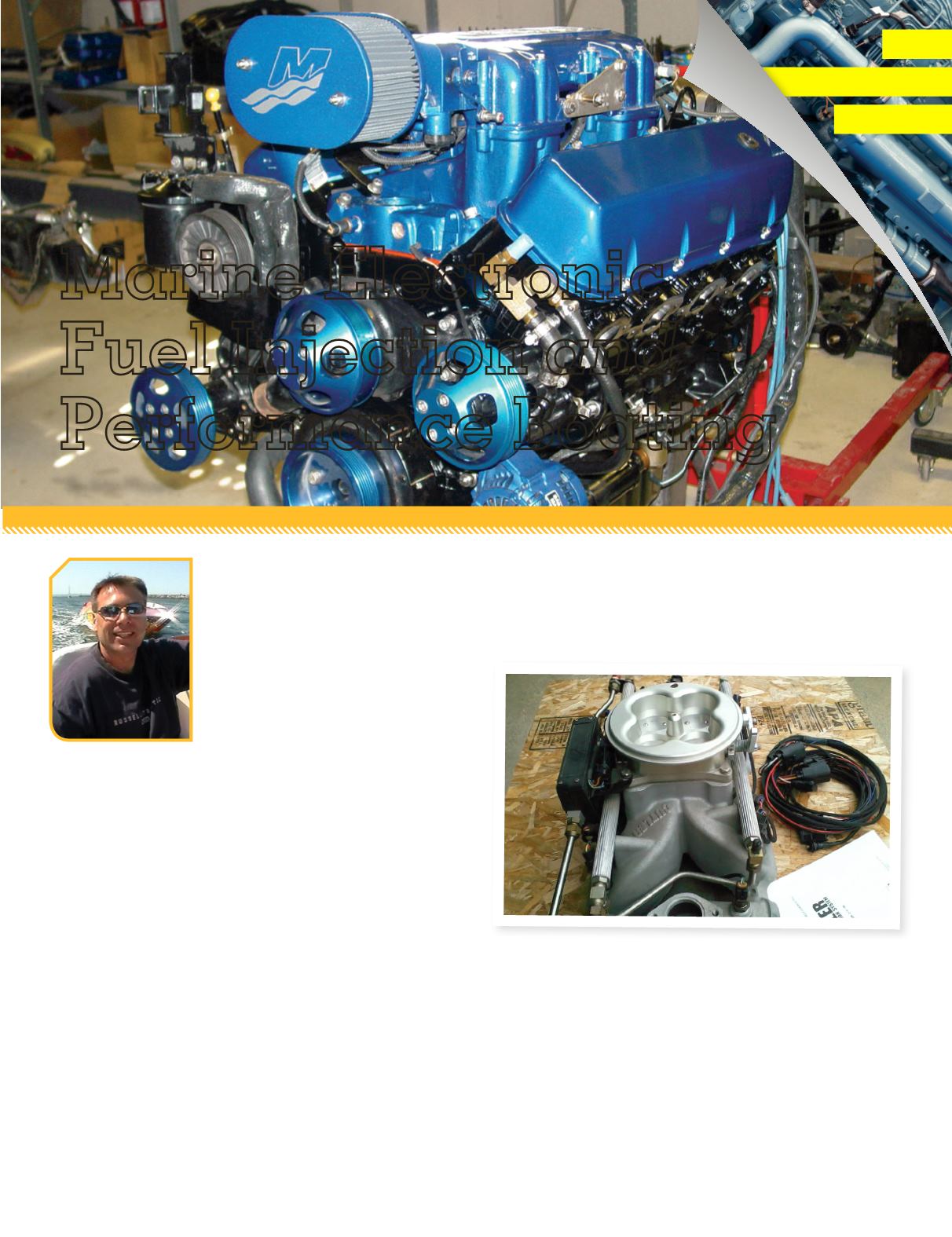
WINTER 2014 | MARINE TECHNICIAN TODAY
19
Marine Electronic
Fuel Injection
and
Performance Boating
I
n the last issue I discussed the first
3 versions of the MEFI controller
no longer available from the marine
OEM’s and upgrading and converting them
to the MEFI IV, V, VI or the Volvo Penta/
Indmar E-Controls. I touched briefly on
aftermarket EFI systems available through
the automotive hot rod industry being
adapted for marine use. I was surprised
at the interest that this article created! I
got many calls from AMTECH members,
technicians, and general boating people asking for more information
on how to replace their aging EFI system with one offering updated
technology or replacing the carburetor with a current EFI system. I found
out that in some cases engine failures could be traced back to the old
style vapor separator tank units that are just no longer functioning as the
OEM’s intended. In this article I will continue the discussion, but first a
little history on the concept of fuel injection.
The earliest information I could find about fuel injection goes back to 1889,
where British Frederick W. Lanchester experimented with fuel injection
mock-up systems. In 1896, E.J. Pennington of the USA applied for a
patent for motorcycle fuel injection use. In the 1920’s it was finally used
on commercial diesel engines. In World War II, the Germans adapted it
for use on aircraft because it could resist G-forces unlike a carbureted
engine. Credit is often given to Robert Bosch for developing the first
effective mechanical fuel injection system used in the automotive industry,
a 1955 Mercedes-Benz. The Bosch fuel injection system was greatly
modified for use on Porsches in 1969 as it produced more power and
had better throttle response compared to the same engine equipped with
a carburetor. Chevrolet offered a mechanical fuel injection option in 1957.
The 1957 Corvette, debuted on October 19, 1956, offered Rochester
Ramjet continuous flow fuel injection on their 283 CID engine. This fuel
injection was a joint venture by Zora Arkus-Duntov, John Dolza and GM’s
Rochester division. That year GM made 6,339 Corvettes, only 1,040
were equipped with Rochester Ramjet fuel injection. GM also reached an
important milestone with that 1957 fuel injected Corvette. They reached
the highest horsepower output for that time, one horsepower per cubic
inch of displacement which was 283 CID and 290 HP. It also produced 0 to
60 MPH times in under 6 seconds, with a top speed of 132 MPH. By 1964
the fuel injected Corvette produced 375 HP! 1981 marked the last year a
carbureted engine was offered in the Corvette. Interesting to note that the
last year the marine industry offered a production engine with a carburetor
was 2012, 31 years later! Just as with the automotive industry, the exhaust
emission regulations finally forced all the engines to be converted. This is a
good thing as EFI engines meet those strict emissions requirements, while
offering lower maintenance, better fuel economy, increased reliability, and
easier drivability.
THE
PERFORMANCE
CORNER
By JohnMosetti


